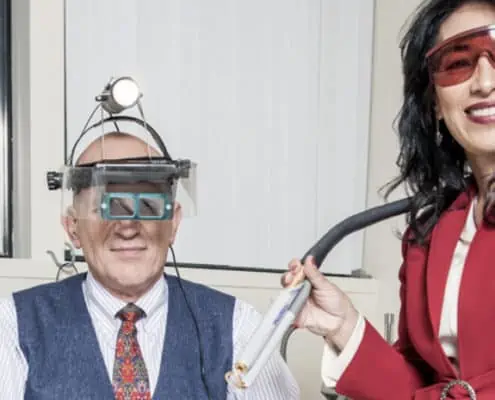
OC 949-428-4500
LA 310-460-2444
Lecture : What are stem cells? – Part 3 of 4 – What do stem cells do?
(The following is a transcription of the above video)
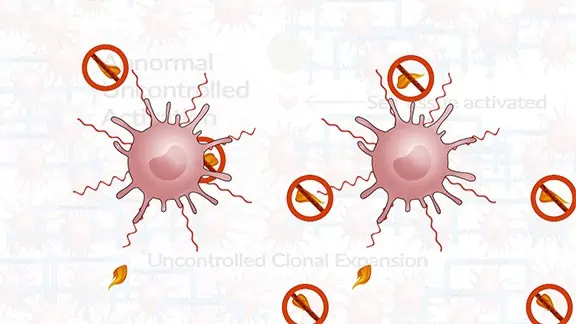
Pharmaceuticals target the inflammatory markers
Studies show that stem cells are used for diseases where our immune system has gone haywire and is causing all sorts of havoc in our body.
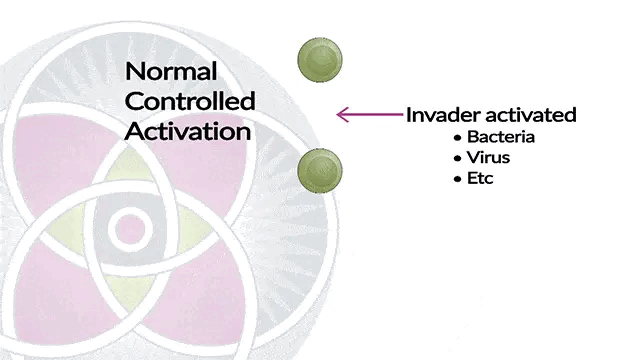
How our immune system is supposed to work – Normal Controlled Activation

When our immune system is activated improperly by our own tissue – Abnormal Uncontrolled Activation
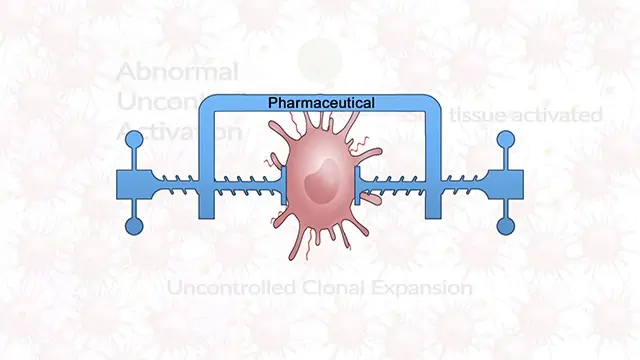
Pharmaceutical drugs work by clamping down on the immune cells.
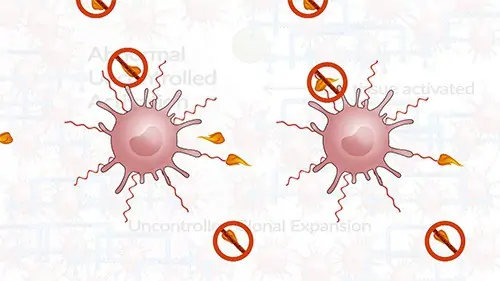
Pharmaceutical drugs will also work by inactivating the inflammatory biochemicals.
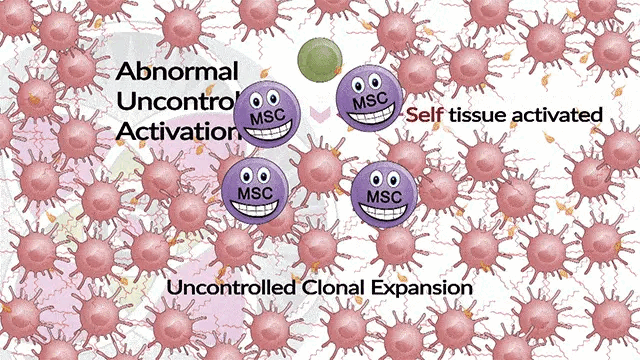
Stem cells attack the aberrant activation right at the source and prevent it from occurring.
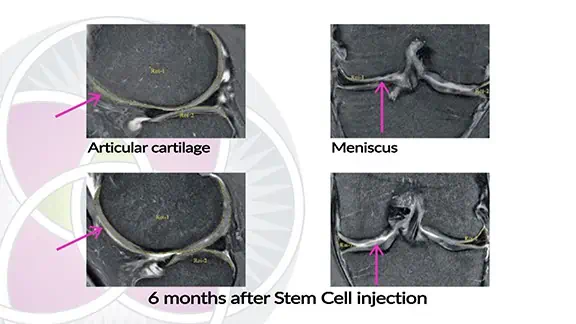
MRI of cartilage in the knee that has been regenerated with the use of stem cells.
We’ve been talking about what stem cells do and how they are used and sure enough, if you have a damaged organ or damaged tissue and you insert these mesenchymal stem cells into that damaged organ or tissue, studies show that the stem cells help the organ start to regenerate.
One of the questions that many people have about what do stem cells do… “Hey, these stem cells came out of someone else’s body”, true.
“So, if you take tissue from someone else’s body and insert it into my body aren’t I going to have an immune response or rejection of those stem cells?”
You’ve heard of course, that sometimes, people have to match. For instance, if someone needs a kidney transplant, you have to match that kidney donor with the kind of cell membranes that you have in your body, so that when you insert that kidney, you don’t reject it.
When you reject a transplanted tissue, the reaction of your immune system is intense and that in fact can kill you let alone not having a functioning kidney. It’s called graft-versus-host disease.
These mesenchymal stem cells from the umbilical cord don’t have the cell wall components that cause those kinds of reactions. Stem cells are what they call immune privileged, so that you can use the stem cells and the other person doesn’t get a reaction to them.
In fact, studies show that the stem cells ability to modulate immune response is so powerful that, not only do you not reject them but if you’re in the middle of rejecting some other tissue that you had transplanted like a kidney and you’re in the middle of the terrible chaos of a graft-versus-host disease, if they infuse those stem cells in you, those stem cells will calm that reaction down and you’ll be able to keep the kidney.
Regenerative Medicine specialists around the world report that the stem cells can be used to heal you of that graft-versus-host reaction.
Last but not least of the many benefits of stem cells, many people are concerned, “Will those stem cells grow a tumor in me?”
No, they won’t and this is one of the things that the FDA required a great deal of stem cell research on, to be sure that these stem cells don’t promote cancer.
In fact, it’s been proven by many studies that not only do they not grow cancer, they will kill tumors, cancerous tumors. There is a lot of research on this and by the way at the end of this lecture, you’ll see some links that you can go to, for additional information on stem cells.
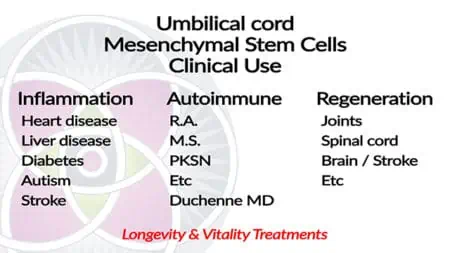
The three areas where stem cells are used : Inflammation, Autoimmune and Regeneration
So, what are these mesenchymal stem cells used for? Here are the three areas; Inflammation, Autoimmune and Regeneration. Please note that some of these treatments may or may not be available in the United States. Please see the FDA Disclaimer for more information.
Heart disease by the way, heart disease is always associated with vascular inflammation and it’s a whole topic for another lecture.
Liver disease, diabetes, autism, the inflammation of your vasculature also causes stroke; so there’s an element of inflammation and getting strokes.
In the case of autism just know though that autism is associated with massive GI or intestinal inflammation. Studies show that if you give the stem cells to a child who’s suffering from autism or even a young adult who is suffering from autism, the inflammation and the GI goes away and the symptoms and the characteristics of the autism start healing and it can be very dramatic. Another one of the many benefits of stem cells.
We’ve spoken about rheumatoid arthritis, MS and Parkinson’s.
Duchenne muscular dystrophy, not necessarily associated with autoimmune, it’s more of a genetic disorder.
Well guess what, studies show that the use of stem cells not only arrests the progression of the muscular dystrophy, they can even heal it.
It’s just incredible, the magic that happens with the use of stem cell therapy.
Joints, spinal cords, brain, strokes, the list is endless but let me simply say that one of the most dramatic examples is when someone is paralyzed because they’ve had a spinal cord severed. The prime example is a commercial pilot, who’s in an accident, has severed his spinal cord, and became quadriplegic.
Stem cells were used on his spine and a few months later, full-function regained. He got his license back and he’s flying airplanes again.
This kind of thing was the stuff of fantasy and now it’s real, it’s actually happening.
AMA Regenerative Medicine & Skincare | 1570 Brookhollow Dr., Santa Ana, CA 92705 | 6310 San Vicente Blvd STE 285, Los Angeles, CA, 90048 Disclaimer: though everything on our website comes directly from reputable publications and scientific journals; and though thousands of these articles are available on official government websites (https://pubmed.ncbi.nlm.nih.gov), they have not been evaluated by the Food and Drug Administration and the FDA has not certified, endorsed or approved any of the scientific findings as methods of treating or diagnosing any diseases or illnesses.